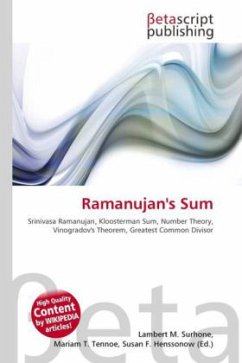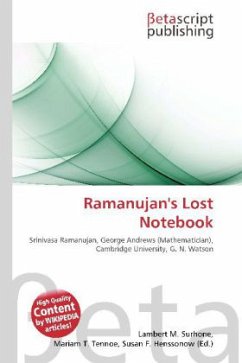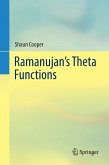Please note that the content of this book primarily consists of articles available from Wikipedia or other free sources online. In mathematics, Ramanujan''s congruences are some remarkable congruences for the partition function p(n). The Indian mathematician Srinivasa Ramanujan discovered the following p(5k+4)equiv 0 pmod 5 p(7k+5)equiv 0 pmod 7 p(11k+6)equiv 0 pmod {11}.In his 1919 paper (Ramanujan, 1919), he gave proof for the first two congruences using the following identities (using q-Pochhammer symbol notation): sum_{k=0}^infty p(5k+4)q^k=5frac{(q^5)_infty^5}{(q)_infty^6} sum_{k=0}^infty p(7k+5)q^k=7frac{(q^7)_infty^3}{(q)_infty^4}+49qfrac{(q^7)_infty^7}{(q)_infty^8}. After Ramanujan died in 1920, G. H. Hardy, extracted proofs of all three congruences from an unpublished manuscript of Ramanujan on p(n) (Ramanujan, 1921). The proof in this manuscript employs Eisenstein series.
Bitte wählen Sie Ihr Anliegen aus.
Rechnungen
Retourenschein anfordern
Bestellstatus
Storno








